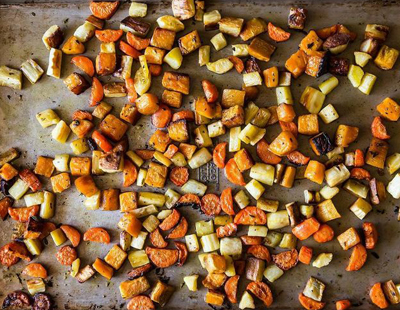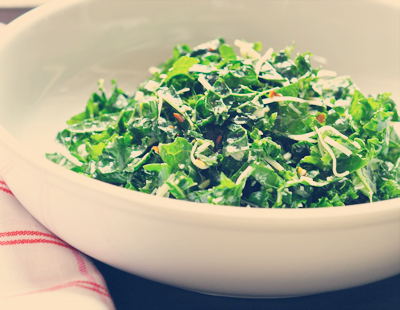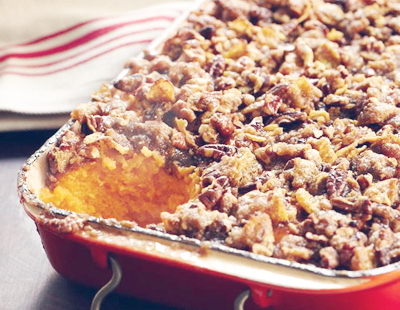When the marquee event of a holiday is a no-holds-barred calorie-fest, it begs the question: What does a fitness expert do on Thanksgiving? For the second year in a row, we’re polling top exercise and nutrition pros to find outwhat they bring to the table, and what they pile onto their own plates.
No spoil-sports here, though—this crop of experts knows how to make good-for-you taste pretty damn good.

The Pro: Carla Addison, R.D.
The Dish: “I always do what I can to create balance by providing a green or orange vegetable. One dish that sticks out that people love: roasted acorn squash with cranberry orange glaze. I cut the squash into quarters and roast it at 350 degrees for half an hour. For the last 10 to 15 minutes, I spoon on the sauce—whole cranberries cooked down with fresh orange juice and a little cornstarch to make it sticky. Someone I served it to remembered it six years later!”

The Pro: Edward Gemdjian, Tier 4 Coach
The Dish: “I went to culinary school, and lately I’ve gotten back into my passion for cooking. One of the things I like to bring to my parents’ instead of roasted potatoes or potato salad is fall root vegetables. Beets, kohlrabi and turnips aren’t as carb-dense and are lower in calories. Chop up the beets and turnips like potatoes, season with Old Bay, paprika, cumin and black pepper, then roast them. Slice the kohlrabi thin and add it after the others are out of the oven—it’s crisp almost like apple when it’s raw. People love the texture of this dish, especially with all the other mushy stuff on the plate.

The Pro: David Siik, running coach and creator of Precision Running
The Dish: “Everyone skips the greens and goes straight for the sticky-gooey. I’ve tried so hard to not jump on kale bandwagon, but this is the easiest salad to make and it’s so good, I have to have it every year at Thanksgiving. Roast a bunch of unsalted seeds in a pan—pumpkin, chia, sesame, sunflower—and put together a dressing of 1/3 lemon juice, 1/3 low-sodium soy sauce and 1/3 part olive oil. Let some thin-sliced red onion sit in the dressing for a bit. Cut kale into ribbons like coleslaw and mix everything together. It’s unexpected because it’s a little Asian-inspired, and the seeds are so good for you!”

The Pro: Lisa Wheeler, director of Group Fitness Development
The Dish: “I like to bring a simple sweet potato casserole that my mom used to make for me when I was little. Growing up I had massive food allergies (sugar, all dairy, almost all grains, most citrus) so without knowing it, I was on a Paleo diet. Being from the South, most Thanksgiving dinners were all beige with turkey, stuffing, mashed potato and gravy. This added a bit of color and nutrition. I have updated her recipe to include coconut milk, a little vanilla, olive oil and chopped walnuts. Super yummy!”

The Pro: Maria Pagano, R.D., Area Tier 4 Manager (New York)
The Dish: “I have a gluten intolerance, but Thanksgiving is one day I do not deny myself dessert. I make a cheesecake I can indulge in and not feel awful later on. The no-bake filling uses cream cheese, whipping cream, Greek yogurt and almond milk, and I do a simple almond-meal crust. You can wing the topping—I used pecans, brown sugar and honey. I have to thank Seamus Dooley, a Tier 4 Manager in Highland Park, Texas, for this recipe!”

The Pro: Matt Berenc, director of the Equinox Fitness Training Institute
The Dish: "For me, the centerpiece is the turkey, and no matter what dressing you use, there is not much to do (I'm a traditionalist). This leaves the side dishes as the main point for creativity, but even with those I'm pretty straightforward. One dish I always love to bring is roasted Brussels sprouts with organic bacon. It's easy to cook, and the flavors match really well. Plus, Brussels sprouts are a vegetable that people grow up hating, so bringing them to a T-day dinner is great way to reintroduce them. (And bacon makes everything better)."